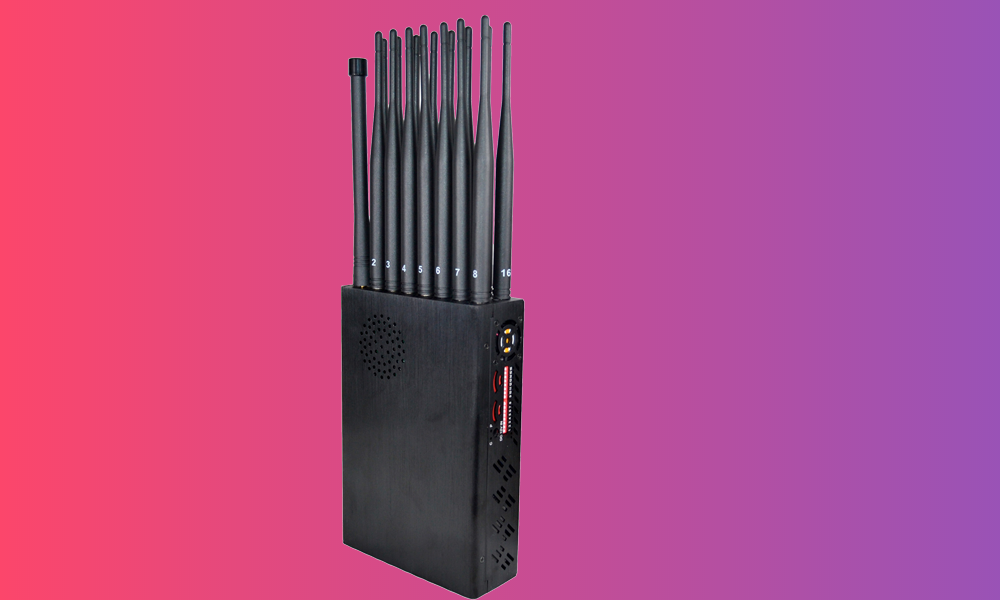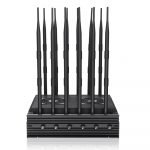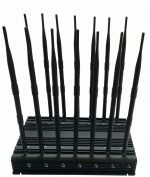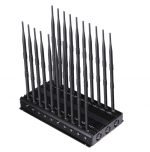How Can Cell Phone Jammers Be Detected?

How can cell phone jammers be detected? The key to the detection of a jammer is signal strength. The strength of the Cell ID facing the jammer is inversely proportional to the distance to the RX device, and the number of neighboring cells facing the jammer also increases proportionally. With a bit of basic trigonometry, you can determine the exact location of the jammer. More advanced jammers broadcast MCC/MNC of regular networks without authentication and fool the device into establishing connectivity with a dead end BSC. Once the jammer is detected, people will typically complain to their carriers and the carriers will send out a technician to the scene to see if they have coverage.
Detecting cell phone jammers
Detecting cell phone jammers is possible if you know how to look for their signals. The signal strength of a cell phone is proportional to the distance from the jammer to the cell phone RX device. Cell phones that are far away from the jammer will report lower J/N, while those that are close will report higher J/N. By aggregating multiple phones, you can find the location of the jammer. Some phones will even report what type of jammer is causing the interference, so you can determine if the signal is coming from a jammer.
Depending on the sophistication of the jammer, you can try switching frequencies on your cell phone to avoid its effects. This trick might not work in all cases, however, so you’d better call the police or file a complaint with the FCC if you suspect that there is a jammer in your neighborhood. The FCC and law enforcement should investigate the situation if you suspect someone of using a jammer.
A national infrastructure for detecting cell phone jammers is necessary to ensure that laws are upheld. The detection system should be accurate enough to provide an alert in under 10 seconds. If it’s successful, it should be able to pinpoint the location of the jammer to within 40 meters. The warning system should provide enough time for law enforcement officials to act if they suspect a jammer is operating in a public space. In addition, crowdsourcing approaches could provide timely location-specific alerts. Similarly, crowdsourcing can provide good accuracy if the alert is based on crowd consensus. However, these solutions are not very practical for precision power-controlled jammers.
Detecting GPS jammers
Detecting GPS jammers can be tricky business, especially since they affect the safety and security of other people, vehicles and infrastructure. These jammers, which are unregulated, can also disrupt other signals, including cell phone towers and timing receivers. The safety and security of these networks is crucial to commerce, banking, transportation, and more. Here’s how to spot one. Once you have this tool, you’ll never worry about another jammer again.
To detect a GPS jammer, you’ll need to first disable all other signals. To do this, make sure you’re away from cell towers and nearby people. Next, turn off your own mobile devices. Once you’ve done that, park the car in an unobtrusive location. Then, use a GPS jammer detector with a lower sensitivity setting. Look for blips in the signal.
The GPS jammer detector is a powerful tool, and it can detect both the presence and the location of a GPS jammer. It can even pinpoint the location of a jammer vehicle in a multi-level parking garage. Other uses include airports, fleet depots, taxi fleets, and parking garages. If you suspect the presence of a GPS jammer, you can activate various notification channels, such as instant alerts.
Detecting Wi-Fi jammers
Detecting Wi-Fi jammers can be difficult, and we need a new way to monitor this phenomenon. While the presence of jammers can cause a decline in the network’s signal strength, there are several tools that can help us detect these threats. One such tool is the spectral spectrum analyzer (SNA). This tool can measure the power of the signals on different WiFi channels. In addition, it can measure the SNR, a key parameter for determining whether a jammer is active.
To detect a Wi-Fi jammer, you need to identify the affected nodes. Usually, a jammer is located near the edge of the wireless network, but it may be between two nodes. If the jammer is in a central node, it will interfere with the signal of that network. To detect it, you need to know the approximate location of the jammer, which you can determine by the affected nodes.
Identifying the jammer’s frequency can be difficult. However, many people have learned to detect jammers and can find them by monitoring their signal with a signal analyzer. Jammers can interfere with the wireless network and prevent users from connecting to the Internet. To prevent this, you must be aware of the different bands and frequencies that are in use in a given area. When a jammer is active, the signal is distorted, which will cause the system to crash.








